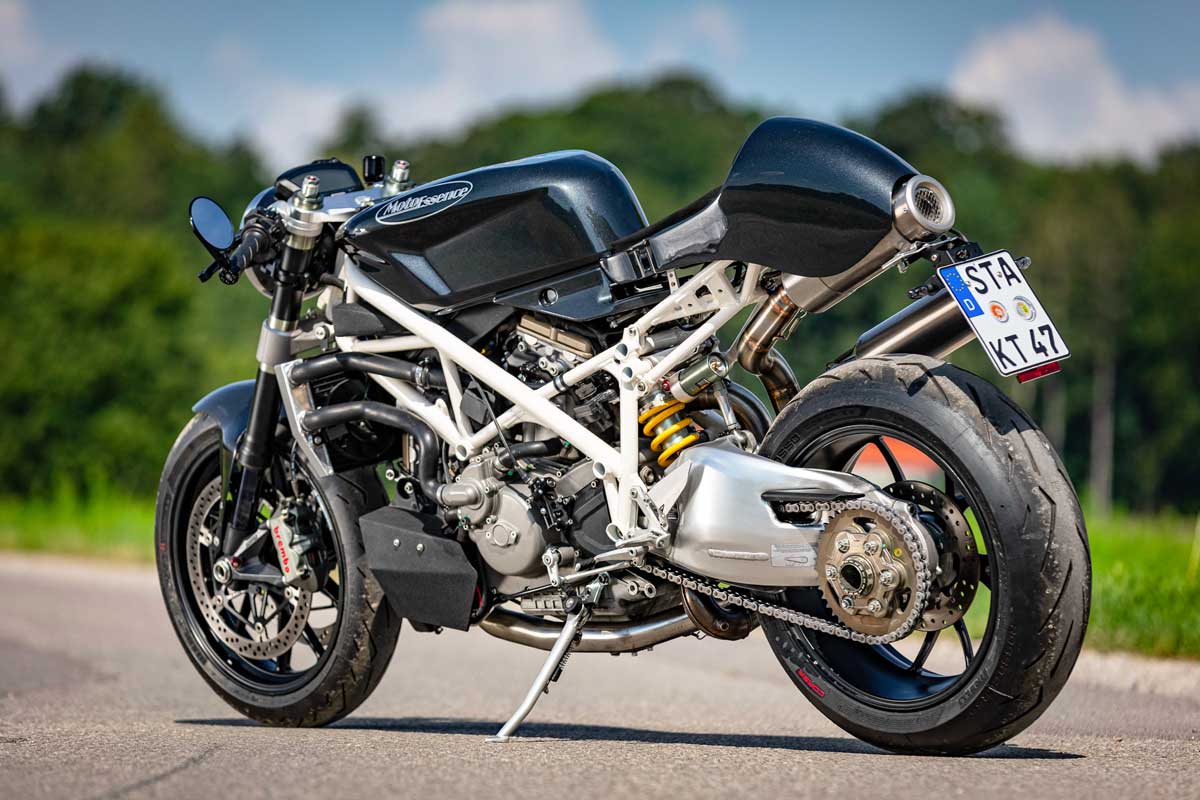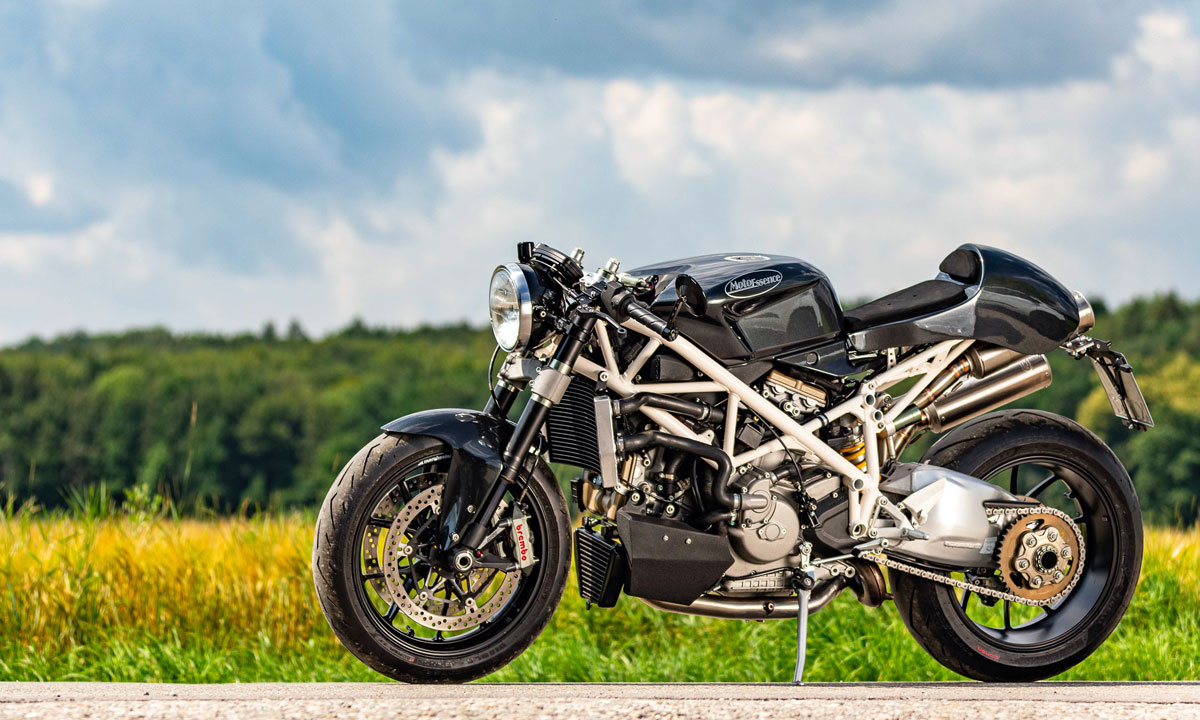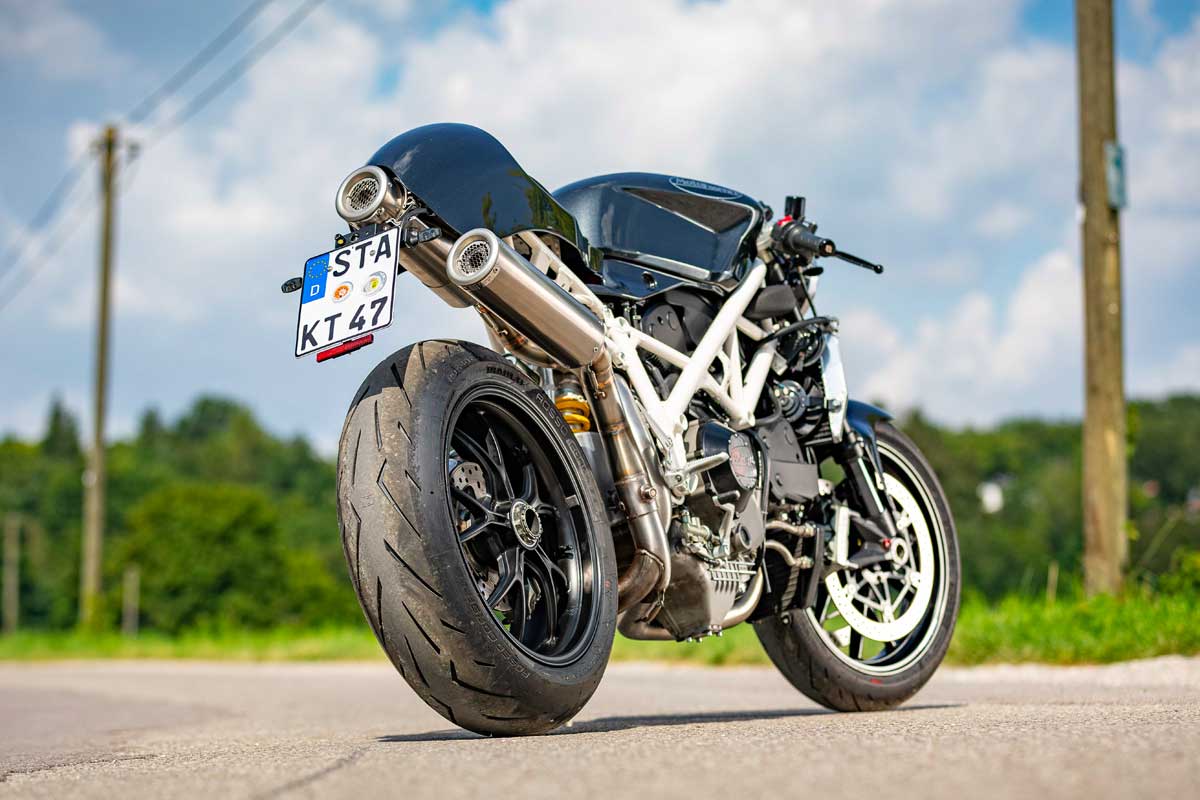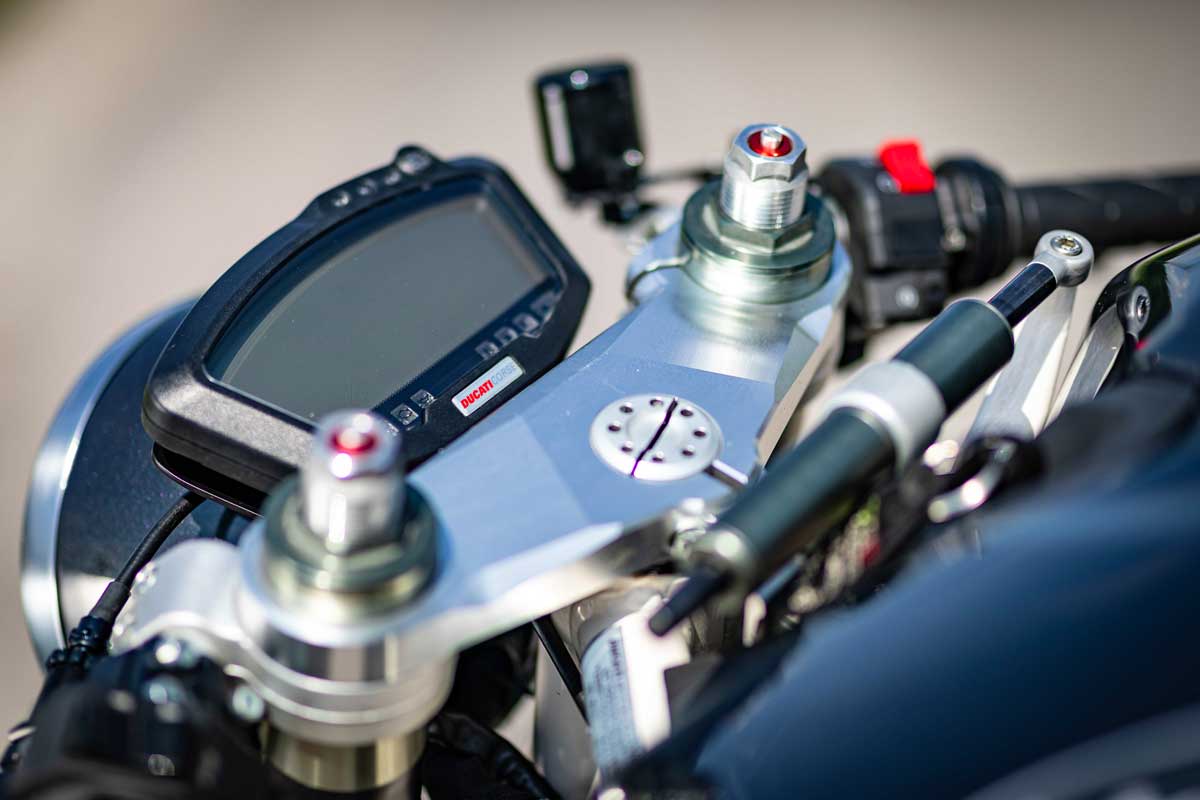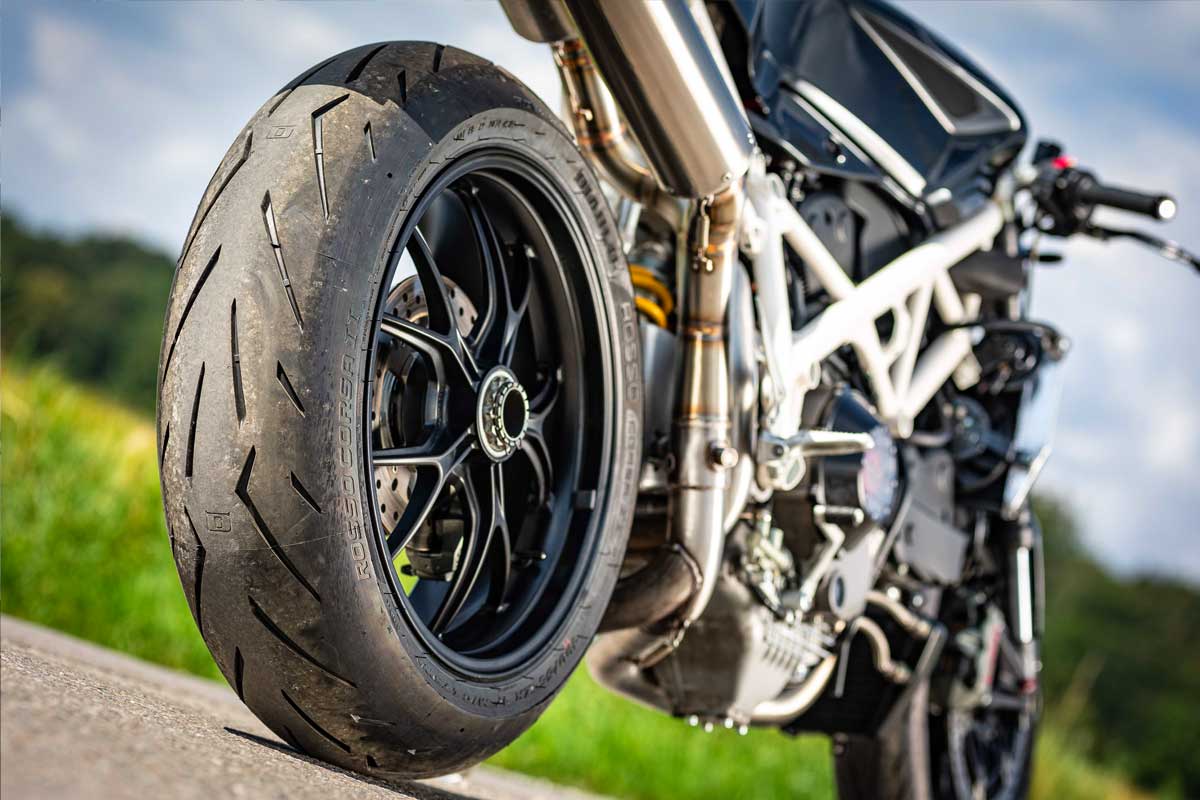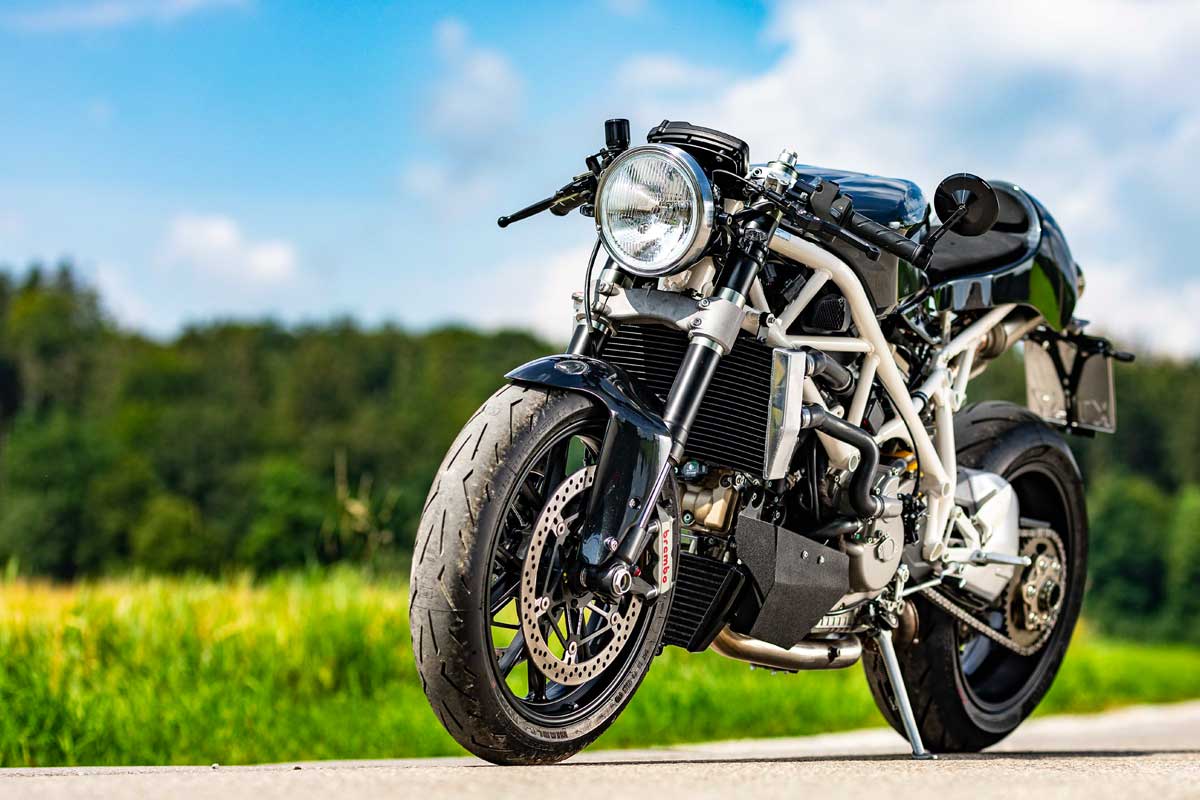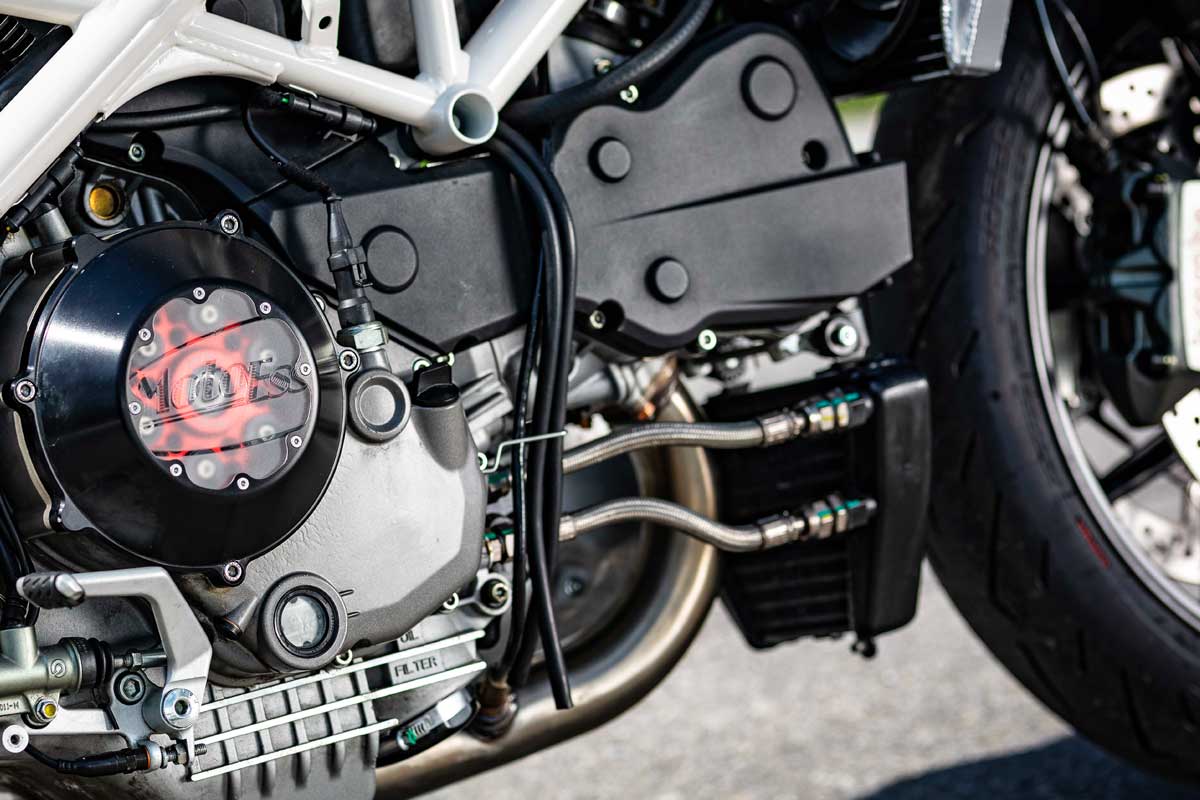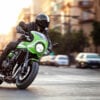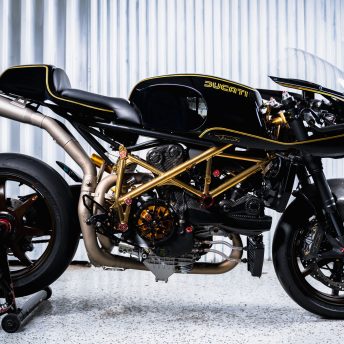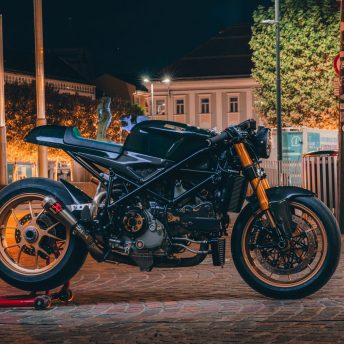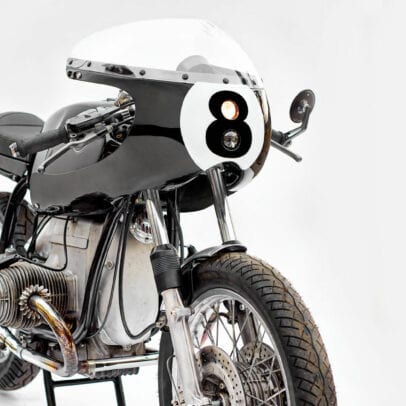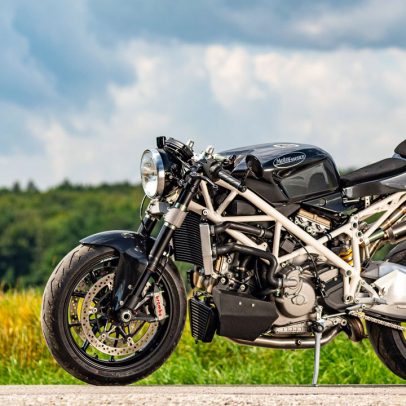Long time friends, racers and bike builders Dominik and Havana formed their workshop, Moto Essence, back in 2015. Dominik was an accomplished motorcycle restorer and Havana an experienced mechanic who earned his stripes on and alongside racetracks around Germany and the EU. At their workshop located to the south-west of Munich, they offer general restoration and servicing, but what excites them most is building bespoke bikes. After a customer came to them with crashed and corroded donor the pair set out to create the cleanest Ducati 1098 cafe racer they could. They call the finished product ‘Le Veuve Noir’ aka ‘The Black Widow’.
“In Germany, we have tough technical inspections by TÜV and the police – plus highways without speed limits. We need our builds to work flawlessly,” says Havana. “That’s why we ride the bikes extensively before we give them to our customers. However, this means you run a risk of falling for a bike. What Le Veuve Noir can do between 80 and 150 mph is jaw-dropping! I can’t remember last time I laughed that loud into my helmet.”
The 2007 Ducati 1098 donor was in a less than desirable state when it arrived at Moto Essence HQ. The bike had been dropped and was unrideable, but its owner wasn’t willing to give it up. Instead, he continued to ride his BMW S1000 RR while the Ducati sat awaiting its time. Unfortunately during a house move the bike was exposed to salt from an alpine road and before he realised corrosion had set in. This left Dominik and Havana with no choice than to completely strip the bike and start over, but first, they needed to develop a concept.
“In the beginning, the customer dreamed of a cut-off rear end and laterally mounted number plate,” Havana recalls. “However Dominik and I thought better of it and decided to go for an old-school race seat.” With a racing cowl at the rear and no more fairings to cover things up, a brazen 1098 cafe racer seemed the logical way to go.
There have, of course, been many Ducati 1098 cafe racers before this one, but the pair were determined to make theirs stand out from the bunch. “Very few naked 1098s look really clean from ALL sides. That was the biggest challenge. I think what we did is clean from wherever you look at it – and we did it without messing with the bike’s tech.”
Fitting a tiny race cowl to the rear of a 1098 is no bolt-on affair. So after tearing the bike down they got stuck into the frame. A thorough clean came first followed by the fabrication of a custom subframe. For the rear cowl, a design was laid out taking cues from a 1959 race fairing before being hand made in house. A key element of the tail is the integration of the exhaust which was the product of Havana’s fond memories of his time at the race track during the ’90s. “The asymmetrical GPR mufflers were my baby and might not be that agreeable to everybody. They are reminiscent of when Aprilia won 250cc world champion titles with Loris Capirossi and Tatsuya Harada. Look at their bikes and you’ll see where I got the inspiration from.”
Thanks to the deep indents in the fuel tank it looks right at home on this Ducati 1098 cafe racer. The same couldn’t be said for the front fairing and twin headlights though. So to create a suitable vintage aesthetic they’ve installed a classic round unit. Holding it in place is a custom made bracket which doubles as a support for the original dash. With the removal of the fairing, a birds nest of wiring lay exposed along the perimeter of the frame. The arduous task of hiding it all involved the relocation of the battery and moving the wiring into the frame. LED indicators with dual functions units in the rear keep proportions tight. Further disguising of unsightly electrics was tackled by fabricating a bespoke cover that sits at the front of the engine.
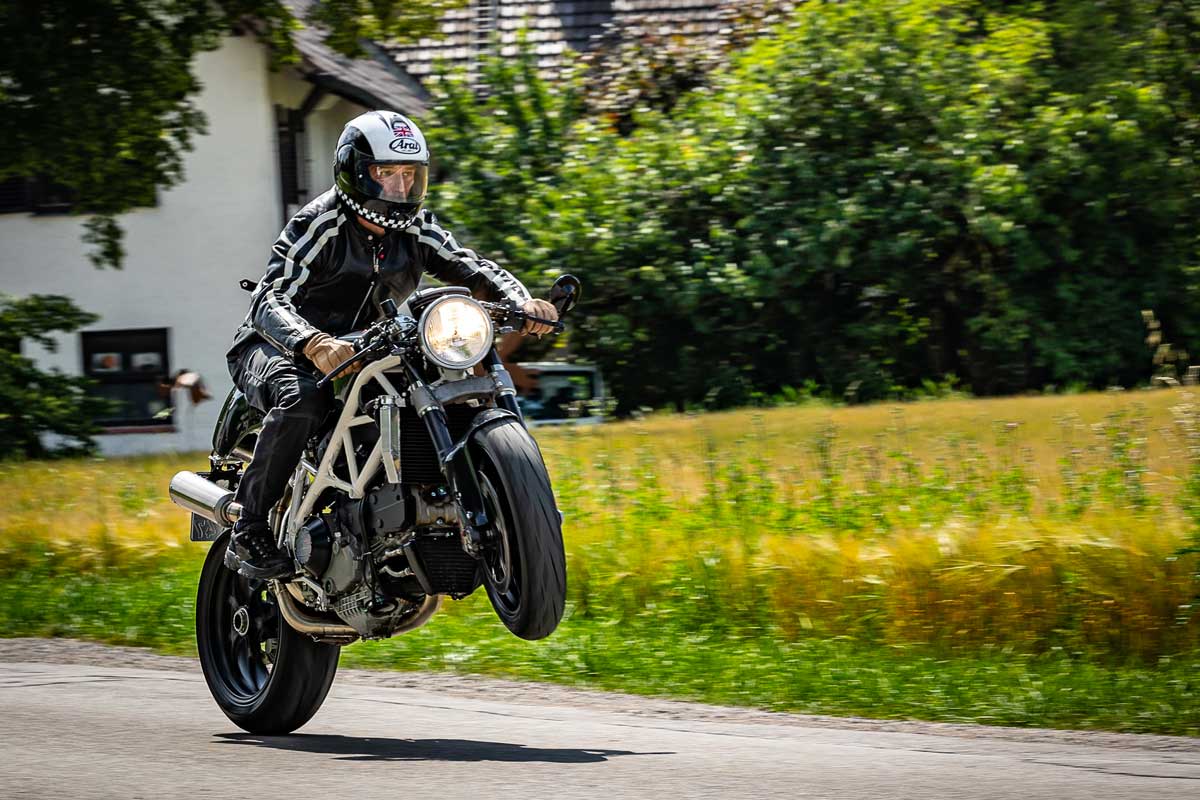

Havana tells us that their Ducati 1098 cafe racer is running a stock Testastretta Evoluzione v-twin. The only performance tweaks they felt were necessary were to the intake in the form of custom made ram air vents and the exhaust. The second gear ratio was also revised which sacrificed some top speed in favour of improved acceleration. With over 160bhp on tap, the bike’s owner agreed this would suffice since he didn’t want to sacrifice everyday rideability.
When I asked Havana what the hardest part about this build was he replied it was handing the keys back to the owner. Why am I not surprised?
